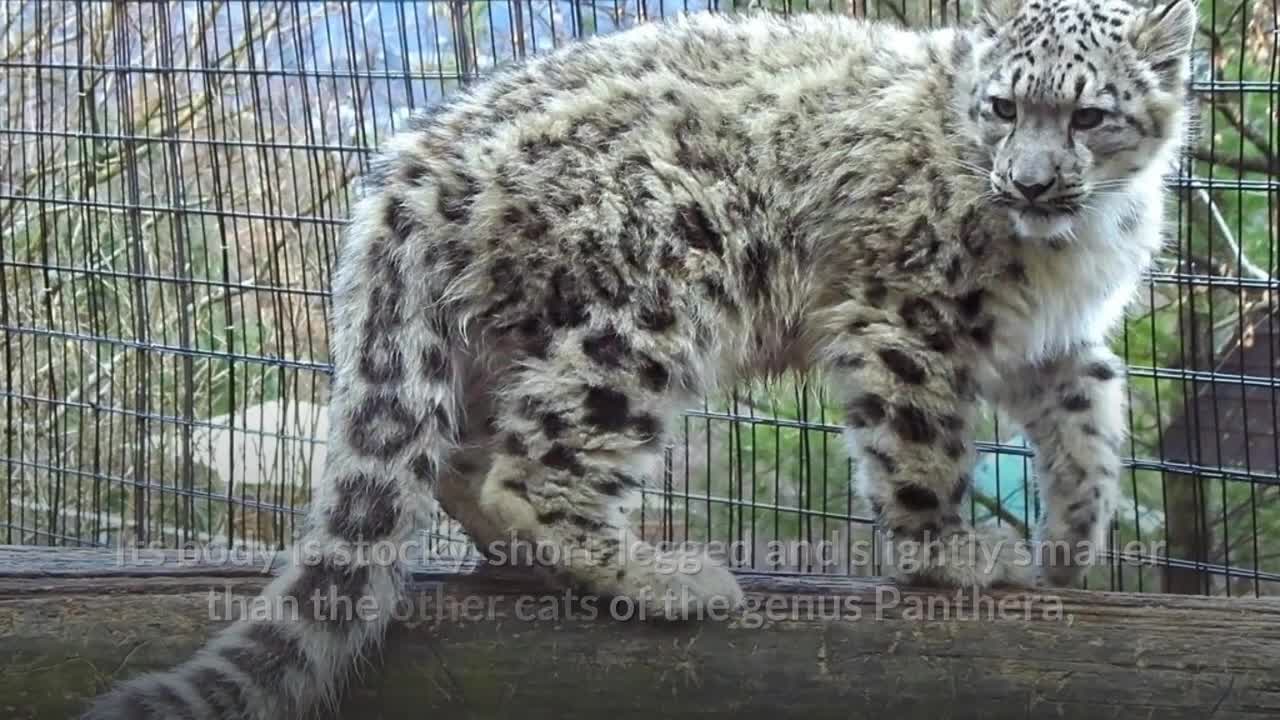Premium Only Content

Snow Leopard || Description, Characteristics and Facts!
The snow leopard (Panthera uncia), also known as the ounce, is a large cat native to the mountain ranges of Central and South Asia. It is listed as Vulnerable on the IUCN Red List because the global population is estimated to number less than 10,000 mature individuals and is expected to decline about 10% by 2040. It is threatened by poaching and habitat destruction following infrastructural developments. It inhabits alpine and subalpine zones at elevations from 3,000 to 4,500 m (9,800 to 14,800 ft), ranging from eastern Afghanistan, the Himalayas and the Tibetan Plateau, to southern Siberia, Mongolia and western China. In the northern range countries, it also lives at lower elevations.
Taxonomically, the snow leopard was long classified in the monotypic genus Uncia. Since phylogenetic studies revealed the relationships among Panthera species, it is considered a member of this genus. Two subspecies were described based on morphological differences, but genetic differences between the two have not been confirmed. It is therefore regarded a monotypic species.
The snow leopard's fur is whitish to gray with black spots on head and neck, but larger rosettes on the back, flanks and bushy tail. The belly is whitish. Its eyes are pale green or grey in color. Its muzzle is short and its forehead domed. Its nasal cavities are large. The fur is thick with hairs between 5 and 12 cm (2.0 and 4.7 in) long. Its body is stocky, short-legged and slightly smaller than the other cats of the genus Panthera, reaching a shoulder height of 56 cm (22 in), and ranging in head to body size from 75 to 150 cm (30 to 59 in). Its tail is 80 to 105 cm (31 to 41 in) long. It weighs between 22 and 55 kg (49 and 121 lb), with an occasional large male reaching 75 kg (165 lb) and small female of under 25 kg (55 lb). Its canine teeth are 28.6 mm (1.13 in) long and are more slender than those of the other Panthera species. In relation to the length of its skull and width of its palate, it has large nasal openings, which allow for increasing the volume of air inhaled with each breath, and at the same time for warming and humidifying cold dry air.
-
 2:41:11
2:41:11
Canal Paulo Figueiredo
2 days agoPedro Valente Debunks The Myths of Jiu-Jitsu History
55.7K8 -
 2:01:46
2:01:46
vivafrei
11 hours agoEp. 254: China to Pay $24 BILLION? Who Owns Embryos? Tulsi was RIGHT on Syria! Prorogation & MORE!
159K143 -
 3:40:55
3:40:55
MyronGainesX
21 hours ago $21.53 earnedFormer Fed Explains Gabby Petito's Murder
87.2K38 -
 2:18:05
2:18:05
Nerdrotic
11 hours ago $9.76 earnedInvestigations into the Unknown with Micah Hanks | Forbidden Frontier #093
82.1K11 -
 18:54
18:54
The Rubin Report
15 hours agoHow One Woman Outsmarted Pornhub & Exposed Its Dark Secrets | Laila Mickelwait
166K133 -
 LIVE
LIVE
Major League Fishing
5 days agoLIVE! - Bass Pro Tour: Stage 3 - Day 4
819 watching -
 1:05:28
1:05:28
Sports Wars
18 hours agoLebron GOES OFF Over Bronny Hate, Pereira LOSES Belt To Ankalaev At UFC 313, Xavier Worthy Arrested
111K19 -
 10:27
10:27
Tactical Advisor
1 day agoDMR or SPR for Civilian Use?
106K6 -
 8:21
8:21
DEADBUGsays
1 day agoThe Crossbow Killer
100K22 -
 8:40
8:40
Tundra Tactical
1 day ago $13.72 earnedThe Executive Order Wishlist.
103K7